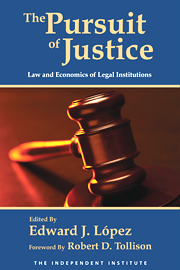Should developers be charged fees for negatively impacting residents? New development often uses existing (or requires new) infrastructure including roads, sewers, refuse collection, parks, fire, police, and schools. When developers provide this infrastructure to users for “free,” who should pay? Over the past fifty years governments have increasingly charged new development impact fees for imposing costs on communities. California is one of the leaders in the development of impact fees. The modern Pigovian idea is that government can set a fee at the value of the impact to internalize externalities and encourage the economically efficient amount of development. While developers can often provide the necessary infrastructure within their own developments as part of the construction process, additional impacts from new development may spill over into existing communities that necessitate additional capital improvements. Local government can hypothetically charge the development a fee that is equal to this impact, thereby internalizing this externality. If the exact value of the external impact is known and implemented as a fee, this process can encourage the economically efficient amount of development. Despite the increasing popularity of development impact fees, several issues make the government’s “economically efficient” solution easier said than done.
This paper focuses on traffic impact fees and illustrates a series of difficulties with their use. Contemporary U.S. law suggests that fees be based on a rational nexus of costs and benefits and on rough proportionality of a fee with the external cost imposed by new development. But how are these external costs measured? Can government know the marginal impacts of all homes before they are built? Do all developments have the same marginal impact on infrastructure, and, if not, should they all be charged different fees? Unless government knows the exact marginal impact of each development, they will undercharge some and overcharge others, making “economically efficient” development impossible. In the absence of markets with actual prices for these common pool resources, government will face numerous calculation problems.
Even if governments could know exact marginal impacts, implementation problems arise due to public choice concerns. Existing residents, politicians, and bureaucrats have incentives to support higher fees for several reasons. Residents receive a free ride when fees are used to support existing infrastructure. High fees raise the price of development that can translate into higher prices for its substitute—existing development – so existing residents have little reason to oppose exorbitant fees on development. Politicians and bureaucrats have an incentive to support higher fees because these fees increase their budgets and existing residents are their constituents while potential residents are not. In light of these problems, traffic impact fees are unlikely to internalize externalities in any Pigovian sense.
We begin by providing a history of fees and exactions in the U.S. and California and review the important legal issues surrounding their application. Next we look at the economics of impact fees and provide evidence of the level of traffic impact fees in various cities in California. We suggest that the variation of fees between jurisdictions indicates that at least some cities are miscalculating or misusing traffic impact fees. We conclude by offering some alternatives to impact fees.















